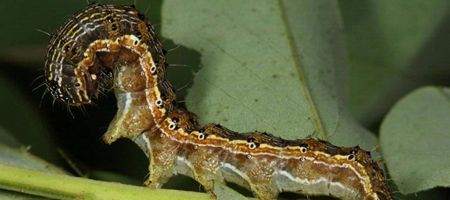Pests are adapting to genetically modified plants designed to kill them, raising doubts over the future of biotech crops.

In an attempt to cut the use of broad-spectrum insecticides, which can harm animals other than the target pests, cotton and corn have been genetically engineered to produce toxins derived from the bacterium Bacillus thuringiensis, or Bt, and have become mainstream crops over the last 15 years.
However, scientists have discovered that initially-rare genetic mutations that confer resistance to Bt toxins are becoming more common as a growing number of pest populations adapt to Bt crops.
“Scientists expected the insects to adapt, but we’re just finding out now how they’re becoming resistant in the field,” says Bruce Tabashnik of the the University of Arizona.
“We want to anticipate what genes are involved, so we can proactively develop strategies to sustain the efficacy of Bt crops and reduce reliance on insecticide sprays.”
For the first time, the team gathered genetic evidence from pests in the field in China, enabling them to directly compare the genes involved in the resistance of wild and lab-reared populations.
They found some resistance-conferring mutations in the field were the same as in lab-reared pests, but that others were strikingly different.
“We found exactly the same mutation in the field that was detected in the lab,” says Tabashnik. “But we also found lots of other mutations, most of them in the same gene and one in a completely different gene.”
One big surprise was the identification of two unrelated, dominant mutations in the field populations. By,contrast, resistance mutations characterized before from lab selection are recessive.
“Dominant resistance is more difficult to manage and cannot be readily slowed with refuges, which are especially useful when resistance is recessive,” says Tabashnik.
Scientists have attempted to deal with resistance in the field by planting refuges – plants that don’t have a Bt toxin gene and thus allow survival of insects that are susceptible to the toxin.
Refuges are planted near Bt crops with the goal of producing enough susceptible insects to dilute the population of resistant insects, by making it unlikely two resistant insects will mate and produce resistant offspring.
According to Tabashnik, the refuge strategy worked brilliantly against the pink bollworm in Arizona, where it had plagued cotton farmers for a century, but is now scarce.
But the dominant mutations discovered in China threaten thisstrategy because resistant offspring arise from matings between susceptible and resistant insects.
The researchers report that resistance-conferring mutations in cotton bollworm were three times more common in northern China than in areas of northwestern China where less Bt cotton has been grown.
Even in northern China, however, growers haven’t noticed the emerging resistance yet, says Tabashnik, because only about two percent of the cotton bollworms there are resistant.
“As a grower, if you’re killing 98 percent of pests with Bt cotton, you wouldn’t notice anything. But this study tells us there is trouble on the horizon.”






